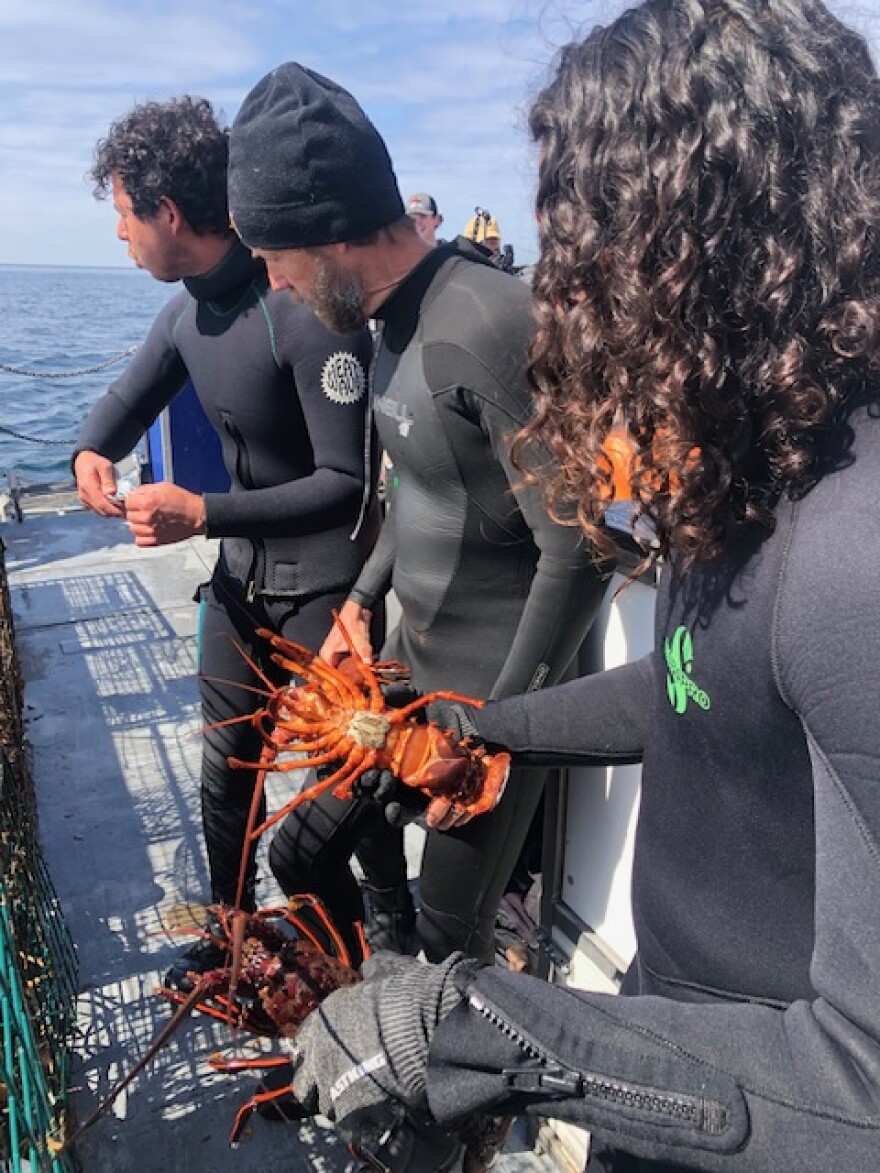We’ve just pulled out of Ventura Harbor on a unique search and rescue mission. We’re on a boat to the Channel Islands to rescue sea life trapped on the ocean floor.
Researchers say there are thousands of abandoned lobster traps off the Southern California coast. They can be a death sentence for lobsters and other sea creatures trapped inside.
"A ghost trap is a trap that's been lost in one of our trap fisheries," said Douglas McCauley. He's the Director of the Benioff Ocean Science Laboratory at UC Santa Barbara and the leader of the expedition.
"We're focusing today on the California Spiny Lobster fishery," said McCauley. "They [the traps] are large wire boxes sitting on the sea floor, a can of bait inside, usually fish heads, and then the lobster comes inside through a funnel and gets caught inside. It's a great, sustainable way to fish, because you pull up the trap, and you take what you want, and if you caught something you don't want, you throw it back in the ocean. Ghost traps are a solvable problem, one everyone wants to solve...the scientists...the lobster fishers that are out there working hard, and the managers looking after these amazing ecosystems."
We’re on board the Ventura-based dive boat Spectre, which is headed to the waters off Santa Cruz and the Anacapa Islands. Researchers from the Benioff Lab and the National Park Service will dive down to locate ghost traps. They’ll be pulled on board the ship, where the sea life will be rescued, documented, and returned to the ocean.
"There are thousands upon thousands of traps that are set for California Spiny Lobsters in Southern California every year," said McCauley. "But unfortunately, you lose some. Some are lost during bad weather. There's a line that goes from the trap on the sea floor to a buoy on the surface. When you cut that rope, you can't find that trap anymore. It's still doing its job, but there's no one tending it."
Another way they can get lost is if a passing boat accidentally cuts the line to the buoy.

"These ghost traps can continue fishing for potentially years. While they go in baited, you'll have lobsters, and other fish come in for that bait. But, when they become trapped and die, they act as bait for another fish to come in, so it ends up being the continuous bait cycle," said Project Scientist Neil Nathan.
Lobster season is over, so every trap we find shouldn’t be in the ocean. At our first stop off Santa Cruz Island, diver Bowen Brock made one of the first ghost trap finds.
"We were doing our safety stop, and I saw it at the last second. We were only in about 20 feet of water, and we were able to get it out," said Brock, who is one of the UCSB researchers.
"One, two, three, four, five, six, seven," said McCauley, who is counting the lobsters in the trap. "It's seven Spiny Lobsters that can't get out. So, if we hadn't recovered the trap, that would be seven fewer lobsters, and these would be lobsters which never reproduced. So you have to multiply that."
McCauley pointed out that this is just one trap. He said there are thousands of new ghost traps ending up off our coastline annually.
"It's estimated that about 13% of all traps that are fished are lost every year. You end up with thousands of traps. You end up with 6,000 to 7,000 traps that are lost that end up as ghost traps that continue ghost fishing all year round."

The traps are designed to disintegrate over time, but they can kill a lot of sea life in the year or two it takes for that to happen. Soon, the divers and the boat’s crew are pulling up trap after trap. Before they throw it back into the ocean, the researchers are collecting data on the sea life, like the size and sex of the lobsters.
As we arrive at Anacapa Island, the team finds a cluster of abandoned traps. One contains what looks like clumps of seaweed and rocks.
"So, let's see...we've got purple urchins, red sea urchins, snails, a couple of octopi, brittle stars, several species of sea stars. All of that inside this trap," said McCauley.
By the end of the day, more than a dozen ghost traps and dozens of lobsters have been picked up, as well as a myriad of other sea life rescued.
"We collected a lot of data and did a lot of good towards cleaning up these traps around the Channel Islands," said Nathan.
"I feel good here, at the end of the day," said McCauley. "We did really well."
The researchers point out that every lobster that is free to lead a normal life can eventually produce thousands of offspring, which is vital for a healthy population and a thriving commercial lobster industry.



